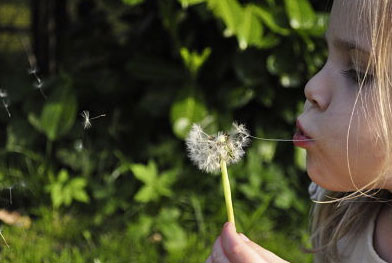There are some practical ways to help a fearful child that without even knowing it, every parent will probably make use of. They will model situations when the child should be fearful and when the child should be cautious. Touching the hot stove top and crossing the road are two examples. Fear is necessary, to keep the child from harm. However, children can develop fears of situations or objects that aren’t actually threatening. These childhood fears and anxieties may change as the child grows up.
Helping the child to deal with fear includes taking their feelings seriously, encouraging them to talk about their anxieties, telling them the facts and giving them the opportunity to confront their fears at their own pace and with your support. What can parents do?
Practical ways to help a fearful baby
Babies of about six months of age, have formed a strong attachment to their parents or caregivers so when they are separated from them they become anxious. They sometimes have a fear of strangers during this time. Babies grow out of this phase with time.
- If the baby gets upset when you leave, take your baby with you from room to room or talk to them when you are out of sight
- Talk to your baby when you are going out or leaving the room and announce your arrival when you come back. This helps them to trust you
- If your baby seems anxious, reassure them with a calm and confident expression
- Don’t leave your baby to ‘cry it out’ it will make their anxiety worse
Practical ways to help a fearful toddler
Toddlers are starting to learn how to cope with their anger and their strong feelings. A common fear for a toddler is that they will be overwhelmed by powerful emotions. Toddlers also have a different understanding of size and may develop seemingly irrational fears, such as falling down the plughole in the bath or toilet.
- Encourage your toddler to talk about their fears and anxieties
- Try to understand that their fears such as falling down the plughole feel genuine to them
- Don’t force the toddler to confront their fear
- It’s OK to help your toddler to avoid the fear for a while

Practical ways to help a fearful child
As children grow up, their list of fears can grow. Some fears are real and some are imaginary. Common childhood fears include fear of the dark, burglary, war, death, separation or divorce of their parents, ghosts and monsters.
- Explain to your child that you take their fears seriously
- Give your child truthful information on topics such as death or war
- Encourage your child to confront the object of their fear, such as dogs, just one step at a time at their own pace. For example, perhaps start with pictures, then try a very small gentle dog that is tied up, so the child decides how close to get
- Give your child a say in controlling the situation. If they are afraid of robbers, then locking the door at night can be their job
- Daily routines give a child a sense of stability.
When do you need to see a doctor about babies or children who are fearful?
You would like the doctor to check there is no underlying medical cause for an increase in fear, anxiety, restlessness or behavioural changes.
When do you need to see a homeopath about childhood fears?
- Your doctor has ruled out a medical reason
- You have tried lots of these practical parenting methods for the fears and anxieties and they don’t respond
- You have read “Why won’t my child listen?” and tried everything
- Your baby, or toddler or child has anxiety or fears that interfere with their daily life
- Your child has night terrors
- Filling in the Gaps: A Homeopath’s Tour of a Dental Technician Lab - 08/11/2024
- Homeopathy surge worldwide - 11/08/2024
- Autism is helped by several different styles of homeopathy - 07/05/2024




Leave a Reply